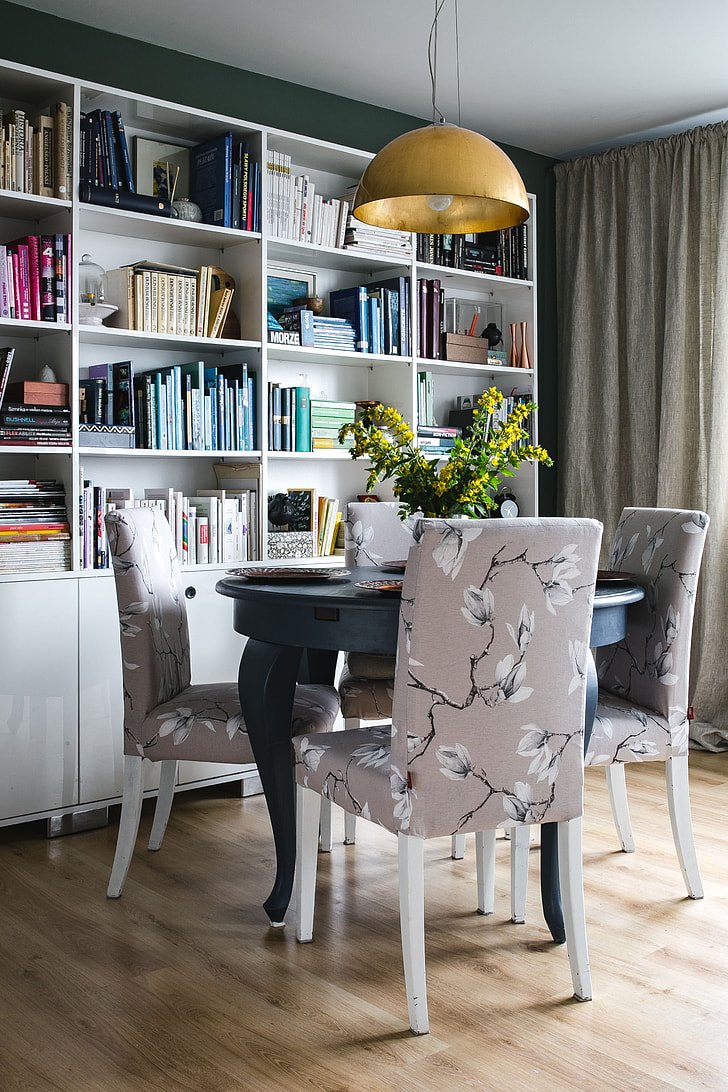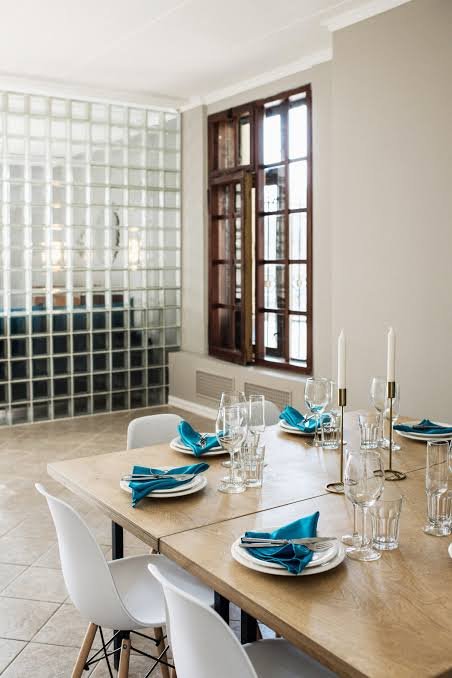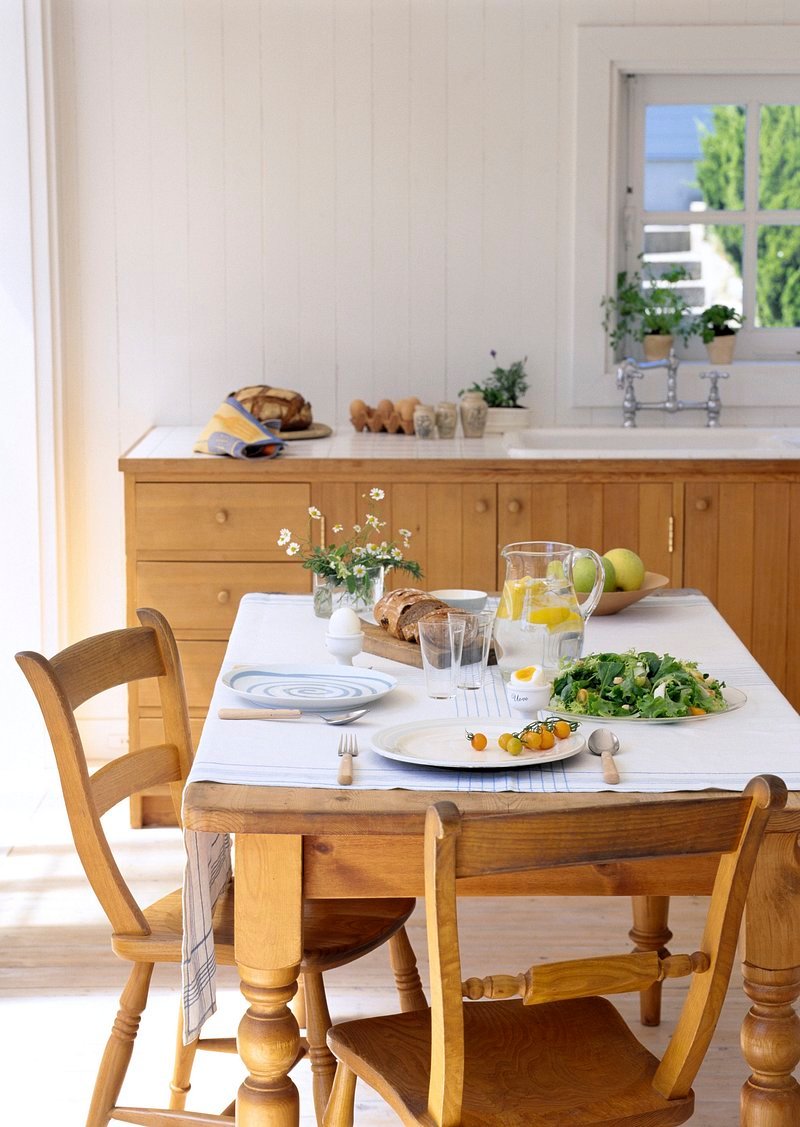Introduction

Dining tables design are more than just a piece of furniture; they are the heart of a home, a gathering place for family and friends, and a canvas for creative expression. The design of a dining table can set the tone for the entire dining area, making it an essential element of interior decor.
In this comprehensive guide, we will delve deep into the world of dining table design, exploring its history, styles, materials, and trends, all aimed at helping you make an informed choice when selecting the perfect dining table for your space.
I. A Brief History of Dining Table Design
To understand the art of dining table design, we must first take a journey through history to appreciate how it has evolved over the centuries.

- Ancient Beginnings
- The concept of Dining Table Design can be traced back to ancient Egypt and Mesopotamia, where they were simple structures made of stone or wood.
- These tables served primarily utilitarian purposes and were often low to the ground.
- Medieval and Renaissance Eras
- During the Middle Ages, Dining Table Design became more ornate, reflecting the status and wealth of their owners.
- Trestle tables gained popularity, often featuring intricate carvings and heavy, dark wood.
- The Victorian Era
- The Victorian era brought a resurgence of ornate designs, including pedestal tables and ornamental inlays.
- Formal dining became a grand affair, with elaborate table settings.
- The Modern Era
- The 20th century saw a shift towards minimalism and functionality in dining table design.
- Designers like Eero Saarinen introduced iconic pieces like the Tulip table, focusing on clean lines and simplicity.
II. Styles of Dining Table Design
Dining table design is diverse, with various styles to suit different tastes and interior decor themes. Here are some well known feasting table styles:

- Traditional
- Traditional dining tables feature ornate details, heavy wood, and classic shapes.
- Common traditional styles include Queen Anne, Chippendale, and Regency.
- Modern and Contemporary
- These tables embrace minimalism, clean lines, and innovative materials.
- Styles like Mid-Century Modern and Scandinavian are celebrated for their timeless designs.
- Rustic and Farmhouse
- Rustic and farmhouse tables are characterized by their weathered appearance, often made from reclaimed wood.
- They exude warmth and a connection to nature.
- Industrial
- Industrial dining tables typically incorporate raw materials like metal and wood.
- They are known for their utilitarian, factory-inspired designs.
- Mid-Century
- Mid-century dining tables from the 1950s and 1960s are known for their iconic designs and innovative use of materials.
- Sleek lines and geometric shapes define this style.
- Scandinavian
- Scandinavian dining tables focus on functionality, minimalism, and a connection to nature.
- Light woods, simple shapes, and clean lines are key features.
- Contemporary Glass
- Glass dining tables add an element of sophistication to any space.
- They create a sense of openness and are available in various shapes and sizes.
III. Materials Used in Dining Table Design
The choice of materials greatly influences the aesthetics and durability of a dining table. Let’s explore some common materials used in dining table design:
- Wood
- Wood is a timeless and versatile material, with options like oak, walnut, maple, and cherry.
- It can be stained or left natural, offering a wide range of finishes.
- Glass
- Glass tables add a modern and elegant touch to a space.
- The glass can be clear, frosted, or even colored, depending on the desired look.
- Metal
- Metals like steel and iron are often used in industrial and contemporary designs.
- They provide a sturdy and robust structure.
- Stone
- Marble and granite are popular choices for creating luxurious, durable dining tables.
- Stone tables can be heavy but make a grand statement.
- Composite Materials
- Materials like MDF (medium-density fiberboard) and particleboard are cost-effective alternatives.
- They can be veneered to mimic the appearance of natural wood.
- Reclaimed and Recycled Materials
- Eco-conscious consumers may opt for tables made from reclaimed or recycled wood and materials.
- These tables have a unique, rustic charm.
IV. Factors to Consider When Choosing a Dining Table
Selecting the right dining table for your space involves careful consideration of several key factors:
- Size
- Determine the appropriate size based on the available space and the number of people who will regularly use the table.
- Leave enough room for chairs and comfortable movement around the table.
- Shape
- Choose a shape that complements your room and suits your needs. Normal shapes incorporate rectangular, round, square, and oval.
- Round tables encourage conversation, while rectangular tables are space-efficient.
- Style
- Select a style that harmonizes with your existing decor or reflects your desired theme.
- Consider how the table’s style aligns with your overall interior design.
- Material
- Think about the material that best matches your lifestyle. Wood is warm and timeless, while glass and metal exude modernity.
- Consider the degree of support and care expected for the picked material.
- Budget
- Set a budget that balances your preferences with your financial constraints.
- Recollect that quality materials and craftsmanship frequently accompany a more exorbitant cost tag.
- Seating
- Decide on the type of chairs or seating options that will accompany your dining table.
- Consider the comfort, style, and dimensions of the chairs in relation to the table.
- Functionality
- Think about how the table will be used beyond dining. Will it serve as a workspace, a game table, or a display surface?
- Tables with features like extensions can be versatile in accommodating different needs.
- Maintenance
- Different materials require varying levels of care. Consider how much time and effort you’re willing to invest in maintenance.
- For example, glass tables may require more frequent cleaning, while wood tables may need periodic refinishing.
- Lighting
- Assess the lighting in your dining area, as it can significantly affect the table’s appearance and ambiance.
- Pendant lights and chandeliers are popular choices for dining table illumination.
V. Trends in Dining Table Design
As interior design trends evolve, so do dining table designs. Here are some current trends that are shaping the world of dining tables:
- Mixed Materials
- Combining different materials, such as wood and metal or glass and stone, creates visually appealing contrasts.
- Live-Edge Tables
- Live-edge tables feature the natural, irregular edge of the wood, adding a touch of rustic elegance to modern interiors.
- Minimalist Designs
- The trend of minimalism continues to influence dining table design, with clean lines, simple shapes, and unadorned surfaces.
- Space-Saving Tables
- As living spaces become smaller, designers are creating tables with space-saving features like folding leaves and extendable tops.
- Customization
- More people are opting for custom-designed dining tables to fit their unique style and space requirements.
- Custom tables often become a focal point of the room.
- Sustainable Choices
- Eco-friendly materials and practices are gaining popularity, with a focus on tables made from reclaimed wood and environmentally responsible manufacturing processes.
- Statement Bases
- Designers are getting creative with table bases, using sculptural and eye-catching designs to make a statement.
- Antique and Vintage Revival
- Vintage and antique dining tables are making a comeback, adding a touch of nostalgia and character to modern homes.
VI. Caring for Your Dining Table
Proper care and maintenance are essential to ensure the longevity and beauty of your dining table. Here are some tips for caring for different types of tables:
- Wood Tables
- Regularly dust and wipe the table with a damp, clean cloth.
- Use placemats and coasters to prevent water rings, heat marks, and scratches.
- Apply wood polish or wax periodically to maintain the wood’s luster.
- Glass Tables
- Clean the glass with a glass cleaner or a combination of water and vinegar.
- Avoid abrasive cleaners that can scratch the glass.
- Use coasters to prevent scratches on the glass surface.
- Metal Tables
- Wipe down metal surfaces with a sodden fabric and gentle cleanser.
- Apply a metal polish or wax to prevent tarnishing.
- Inspect for rust and address it promptly with a rust remover.
- Stone Tables
- Clean stone surfaces with a stone-specific cleaner or a mixture of water and mild detergent.
- Sealing stone surfaces regularly helps prevent staining.
- Be cautious with acidic substances like lemon juice, as they can etch the stone.
- Reclaimed and Recycled Tables
- Follow the care instructions provided by the manufacturer, as these tables can vary widely in materials and finishes.
- Regular cleaning and occasional refinishing may be necessary, depending on the table’s construction.
VII. Conclusion
Dining table design is a captivating blend of history, art, and functionality. The perfect dining table can elevate your dining experience, enhance your living space, and reflect your personal style. Whether you opt for a classic wooden table, a modern glass masterpiece, or something entirely unique, understanding the history, styles, materials, and trends in dining table design will empower you to make an informed decision. With proper care and attention, your dining table will continue to be a beloved centerpiece in your home for years to come.










